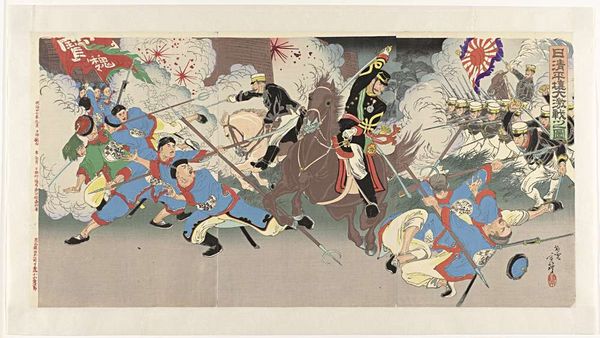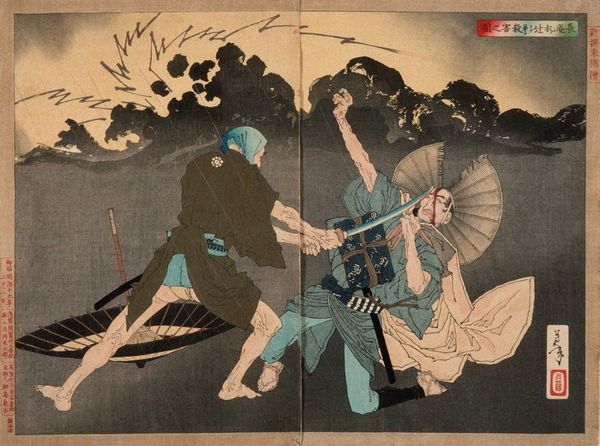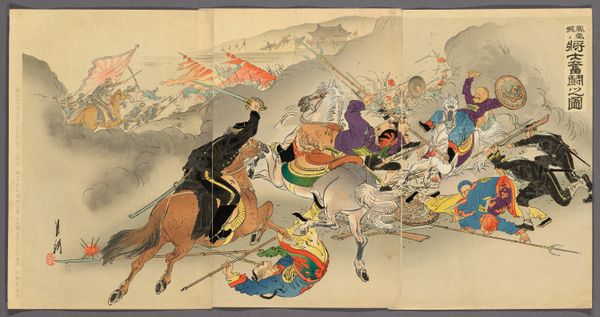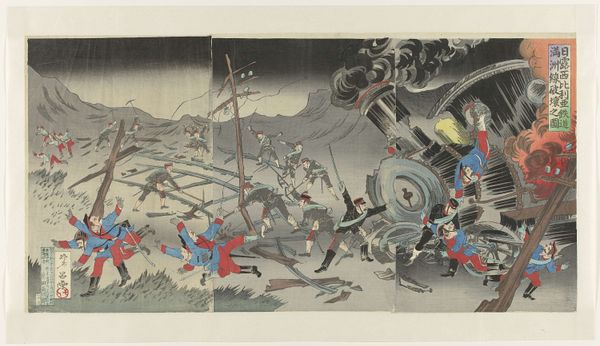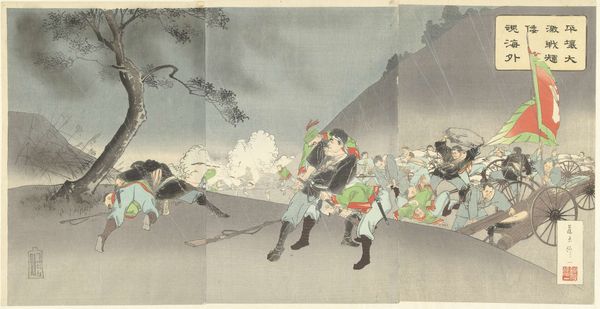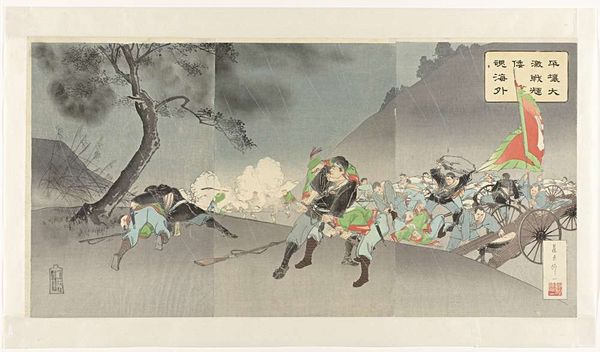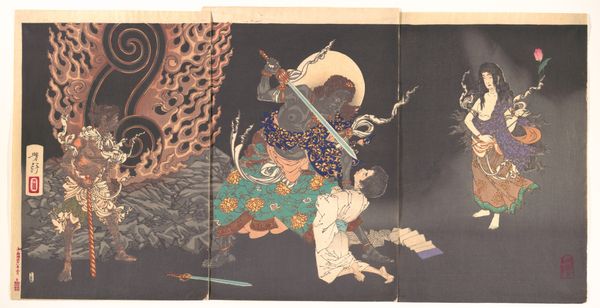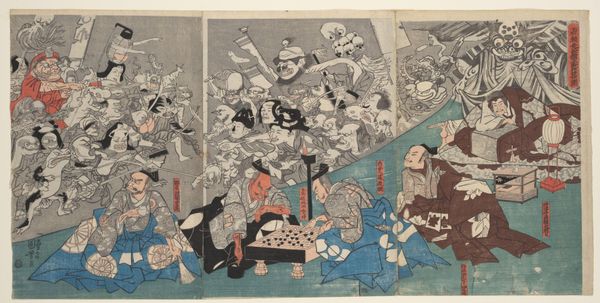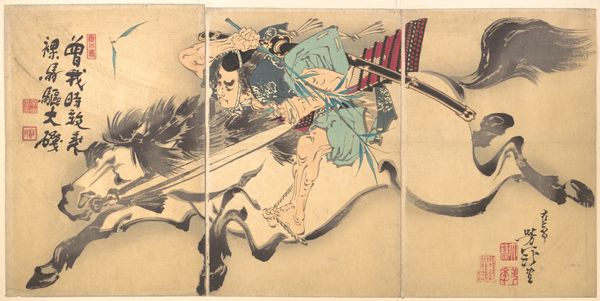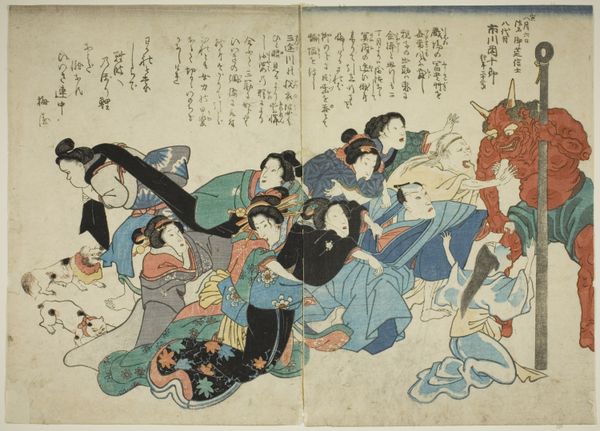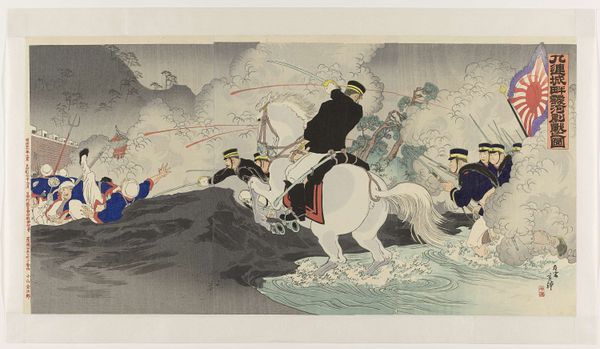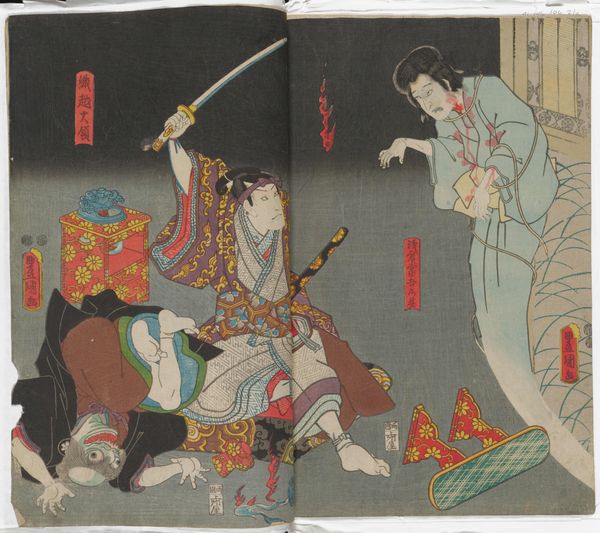
Great Victory of Our Troops at the Fierce Battle of the Ansong Ford (Anjo no watashi waga gun taisho no zu) 1894 - 1895
0:00
0:00
Copyright: Public Domain
Editor: Here we have "Great Victory of Our Troops at the Fierce Battle of the Ansong Ford" by Migita Toshihide, a woodblock print made between 1894 and 1895. It feels like a propaganda piece, full of dynamism and aggression. I'm struck by the figures wading through the water. What kind of story does this print tell from your perspective? Curator: It's interesting that you say "propaganda." Consider the time: this print emerges from the Sino-Japanese War, a moment of intense nationalism and imperial expansion for Japan. Look closely at how the Japanese soldiers are depicted— heroic, modernized, almost superhuman. How does this contrast with the depiction of the Chinese soldiers? Editor: The Chinese appear disorganized, falling, their flag being overtaken… almost cartoonish in comparison. Curator: Precisely. Think about Edward Said's concept of Orientalism. The print exoticizes and inferiorizes the Chinese, reinforcing a Western gaze through which Japan positions itself as a modern, powerful nation. The use of a "triptych" further amplifies the narrative, doesn't it? Editor: Absolutely. Each panel reinforces this sense of Japanese triumph and supposed Chinese backwardness. And it's not just a neutral recording of an event. Curator: Exactly! Art like this serves to legitimize the war and consolidate power. But, let's consider this from a contemporary perspective. Does viewing it now complicate our understanding of Japan's historical narrative? Editor: Definitely. It reminds us that historical "facts" are always filtered through a particular lens, reflecting power dynamics of the time. Looking at this, I'm much more aware of the way the media shapes perceptions of conflict. Curator: And how crucial it is to deconstruct the underlying power structures embedded within even seemingly straightforward historical depictions. I think it's crucial for students to think through such works, always considering identity, gender, race, and political dimensions. Editor: I hadn't considered the impact of Orientalism here before, but seeing it as a constructed narrative changes everything. Thank you for your input, this print now gives a clear understanding of war and nation through social and political power.
Comments
No comments
Be the first to comment and join the conversation on the ultimate creative platform.
